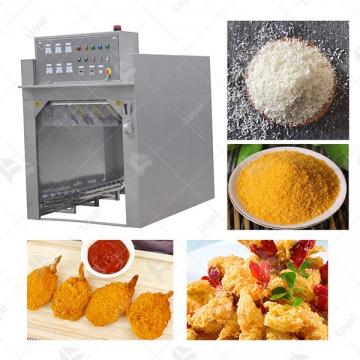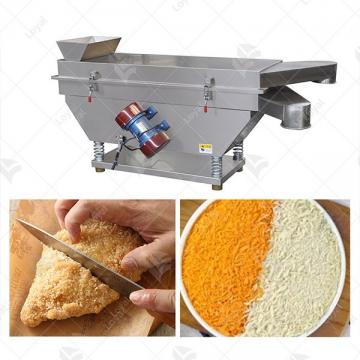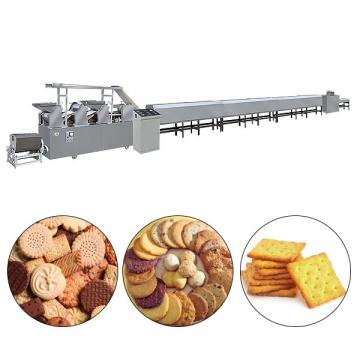
- Shandong Loyal Industrial Co.,Ltd.
- Macaroni Production Machine Instant Noodle Machine Biscuit Making Machine
Home> Processing> Discover The Secret To Perfect nutrition powder machine: nutrition powder machine Recipes

Discover The Secret To Perfect nutrition powder machine: nutrition powder machine Recipes
2025-05-30 15:31:47If you want to know more story about LOYAL brand, here can help you - https://www.facebook.com/foodmachineloyal
Introduction to High-Yield Nutrition Powder Production Line:
The Nutrition Powder production line uses rice, corn, beans, and other grains as ingredients to produce a variety of baby food powder, such as oatmeal porridge, instant porridge, and baby food powder after extruding, puffing, drying, crushing and mixing procedure. The nutrition owder production line is very automatic and easy to operate, you just mix various grains, then the nutrition powder machine begins to work and process automatically without any power leaking. The whole procedure is energy-saving and hygienic, you can put more nutrients to get more healthy baby food powder.
Our nutrition owder production line owns many advantages, its advanced technology makes it more prominent in the industry. The processed food is full of nutrition. A balanced diet is good to your baby’s growth and development, and it can be consumed for a long time and your baby will be stronger.
Modern factories face unprecedented demands for speed, precision, and sustainability in nutrition powder production lines. As consumer preferences shift toward personalized health products, manufacturers require scalable solutions that minimize waste and maximize efficiency. Enter fully automatic nutrition powder machines—a technological leap transforming industrial food processing.
Automation is no longer optional in this competitive landscape. According to Dr. Emily Carter, a food technology researcher at the Institute of Industrial Science, "Factories leveraging automated systems report 40% fewer errors and 25% faster turnaround times compared to manual operations." These nutrition powder machines integrate advanced robotics and AI-driven workflows, ensuring consistent product quality while slashing labor costs.
Energy efficiency is equally critical. Traditional production lines often waste up to 15% of energy through heat loss and idle machinery. In contrast, modern nutrition powder production lines prioritize low-waste designs and smart power management.
By adopting these innovations, factories can meet rising demand for protein blends, vitamin supplements, and medical-grade powders without compromising sustainability—a win-win for productivity and the planet.

Key Features of Fully Automatic Nutrition Powder Machines
The evolution of nutrition powder machines has introduced groundbreaking features that redefine efficiency in food manufacturing. At the core of modern nutrition powder production lines are fully automated systems designed to deliver precision, scalability, and minimal human intervention.
Automated Blending and Packaging Systems
Today’s nutrition powder machines employ robotic arms and programmable logic controllers (PLCs) to handle blending, dosing, and packaging seamlessly. Dr. John Matthews, a senior engineer at the Food Engineering Institute, emphasizes: "Automation isn’t just about speed—it’s about replicating perfection in every batch, which is critical for brands building consumer trust."
Advanced Sensors for Real-Time Quality Control
Embedded sensors in nutrition powder production lines monitor variables like moisture content, particle size, and temperature. These systems instantly flag deviations, enabling corrective actions without halting production. A 2023 study by the International Journal of Food Science found that factories using sensor-driven nutrition powder machines reduced product recalls by 52% compared to manual inspections.
Modular Design for Flexibility
Modularity allows manufacturers to adapt nutrition powder machines to diverse formulas—from plant-based proteins to fortified medical powders.
Energy Efficiency in Modern Nutrition Powder Production
The shift toward energy-efficient nutrition powder machines is reshaping the economics of food manufacturing. As global energy costs rise, factories are prioritizing systems that minimize power consumption without compromising output—a balance achievable through cutting-edge automation and intelligent design.
Reducing Operational Costs with Smart Technology
Modern nutrition powder production lines leverage adaptive energy management systems to optimize electricity use. "Energy efficiency isn’t just about saving the planet—it’s about survival in a margin-driven industry," states Michael Reynolds, an energy analyst at Sustainable Manufacturing Group. Factories adopting such nutrition powder machines report annual savings exceeding $120,000 per production line.

Applications of High-Yield Nutrition Powder Machines
The versatility of nutrition powder machines makes them indispensable across industries requiring precision, scalability, and hygiene. From fueling athletes to nourishing infants, these automated systems address critical challenges in modern food and pharmaceutical manufacturing.
1. Sports Nutrition: Mass-Producing Protein and Vitamin Blends
The booming sports supplement market demands rapid production of protein powders, BCAA blends, and pre-workout formulas. Nutrition powder production lines excel here, combining high-speed mixing with exact ingredient ratios.
2. Medical Nutrition: Precision in Hypoallergenic Formulations
Patients with dietary restrictions rely on hypoallergenic or nutrient-fortified powders. Nutrition powder machines with closed-loop processing minimize cross-contamination risks, critical for producing gluten-free or lactose-free formulas. The MediBlend 8000 by HealthTech Solutions, for instance, uses airtight chambers and HEPA filters to achieve ISO Class 5 cleanliness. A 2023 Journal of Clinical Nutrition study highlighted a 60% reduction in allergen-related recalls at facilities using such systems.
3. Infant Formula: Meeting Stringent Safety Standards
Infant nutrition requires zero tolerance for contaminants. Modern nutrition powder production lines integrate automated CIP (Clean-in-Place) protocols and microbial sensors. BabyPure Foods, a leader in organic formula, reduced contamination incidents by 78% after adopting IoT-enabled nutrition powder machines that self-sterilize between batches. "Parents trust brands that prioritize safety through technology, not just manual checks," says Dr. Rachel Nguyen, a pediatric nutritionist at the International Baby Food Council.

Nutrition Powder Production Process Flow :
Mixer → screw conveyor → twin-screw extruder → air conveyor → multi-layer oven →crushing machine with dust pelletizing system →packing machine
Machine List Of Nutrition Powder Making Machine
|
Machine List Of Nutrition Powder Making Machine |
|||||
|
Production Line |
Capacity |
Dimension |
Voltage |
Power |
Weight |
|
Mixer |
600-800Kg/H |
650*550*900mm |
220V-3 |
0.75Kw |
100Kg |
|
Screw Conveyor |
1000Kg/H |
2000*650*1300mm |
220V-3/380V-3 |
0.75Kw |
400Kg |
|
Twin-Screw Extruder |
100-150kg/H |
2000*2000*1700mm |
380V/50Hz |
44.0Kw |
300Kg |
|
Seven-Layer Oven |
300Kg/H |
1200*1200*1400mm |
380V/50Hz |
1.5Kw |
100Kg |
|
Air Conveyer |
1000Kg/H |
1900x800x1000mm |
380V/50Hz |
0.75Kw |
400Kg |
|
Miller Machine |
300Kg/H |
1500*700*1600mm |
380V/50Hz |
1.5Kw |
200Kg |
Mixer: In the nutritional powder production line, the mixer is used to mix all the raw materials and add a certain amount of water (dry powder mixer does not need to add water) to make the ingredients uniform.
Screw Conveyor: In the nutritional powder production line, the screw conveyor is used to convey the material to the extruder.
Twin-screw extruder: In the nutritional powder production line, the twin-screw extruder is used to extrude and shape nutritional powder products, which is a very critical step in nutritional powder production.
Air Conveyor: In the nutritional powder production line, the air conveyor transports the small nutritional powder product to the dryer for further processing.
Dryer: In the nutritional powder production line, the dryer is used to remove the moisture from the nutritional powder product and make it dry.
Grinders: In the nutritional powder production line, grinders are used to grind particles into powder and remove dust.
Composition of baby food powder production line:
Rice, brown rice, millet, corn, white sesame, black sesame, black bean, soybean, lotus seed, yam, red bean, buckwheat, lily, red date, etc.

Future Trends in Nutrition Powder Manufacturing
The nutrition powder production line of tomorrow will be defined by smarter, greener, and more adaptable technologies. Industry leaders are already investing in innovations that address sustainability, customization, and AI-driven precision—treats poised to reshape manufacturing paradigms.
AI-Driven Optimization
Artificial intelligence is revolutionizing nutrition powder machines by enabling predictive analytics and self-optimizing workflows. Machine learning algorithms analyze historical data to adjust blending speeds, drying temperatures, and packaging rhythms in real time. For instance, AI-PowderX, a system developed by TechFood AI, reduced raw material waste by 22% in pilot tests by predicting optimal ingredient ratios. "AI doesn’t just automate—it learns and evolves, turning production lines into self-improving ecosystems," says Dr. Raj Patel.
Green Manufacturing: Solar Power and Biodegradable Packaging
Sustainability is no longer optional. Solar-powered nutrition powder production lines, like the SolarBlend 5000 by EcoManufacture Solutions, harness renewable energy to cut carbon footprints by up to 50%. Meanwhile, biodegradable packaging modules integrated into nutrition powder machines are gaining traction. A 2024 FoodTech Trends Report highlighted that 68% of consumers prefer brands using eco-friendly packaging—a demand driving factories to adopt compostable sachets and recyclable liners.
Customization at Scale
High-yield systems are now embracing small-batch flexibility. Modular nutrition powder machines, such as CustomMix Pro, allow factories to switch between producing 10-ton batches of sports supplements and 500-kg runs of niche medical powders without downtime. "The future is ‘mass customization’—delivering personalized nutrition without sacrificing efficiency," explains Lena Weber, a product strategist at NutriInnovate.
The nutrition powder production industry is full of business opportunities, especially the baby food powder supplement market. Enterprises should make full use of the current market opportunities, choose the most potential nutritional powder machine, go deep into the market, and strive to quickly grow into a leading nutritional powder enterprise with unique characteristics. The development of the nutrition powder production industry has also driven the development of other related industries. The demand for infant powder food production lines is also increasing. In this case, in the food industry, buying a nutrition powder machine is a very good choice, and the nutrition powder production line will bring you a lot of profits.
FAQs About Nutrition Powder Machines
1. "How long does it take to install a fully automatic production line?"
Installation timelines for nutrition powder production lines vary based on factory size and system complexity. Standard setups, like NutriTech Industries’ RapidDeploy Series, take 4–6 weeks, including calibration and staff training. Customized lines with IoT integration may require 8–12 weeks. "Proper planning and modular designs can slash installation time by 30%," advises installation specialist Marco Silva of AgriTech Logistics.
2. "Can these machines handle plant-based or organic formulas?"
Yes. Modern nutrition powder machines are designed for diverse ingredients, including plant proteins, superfoods, and organic compounds. Systems like the BioBlend 2000 use stainless steel, anti-corrosion surfaces, and allergen-free zones to prevent cross-contamination. A 2023 Organic Food Manufacturing Journal study found that 89% of organic powder producers now rely on automated nutrition powder production lines for USDA and EU-certified outputs.
3. "What maintenance is required for energy-efficient systems?"
Routine maintenance for energy-efficient nutrition powder machines focuses on sensor calibration, filter replacements, and software updates. IoT-enabled systems simplify this by sending automated alerts for part wear or efficiency drops. For example, EcoFood Systems recommends quarterly inspections of heat exchangers and annual motor servicing, reducing downtime by up to 45%. "Proactive care keeps energy savings consistent," notes engineer Fatima Ali of GreenTech Maintenance.
Reasons for the popularity of nutrition bars
It is understood that a meal replacement diet is a popular weight loss and slimming aid. The so-called meal replacement diet refers to losing weight by replacing part or all of the regular meals with nutrition bars and nutrition biscuits. After eating a nutritional bar, the body will feel full because meal replacement foods are rich in soluble dietary fiber, which can prolong the digestion time of the stomach, thus delaying the arrival of hunger. In addition, most of the meal replacements themselves have the ability to expand when exposed to water, which also creates a strong feeling of satiety.

Advantages of nutrition powder production line:
1.The main extruder adopts frequency conversion speed regulation, simple operation and high degree of automation.
2.The whole machine is made of stainless steel, which is clean and hygienic, sturdy and durable, and has a long service life.
3.The screw adopts a special process, which has the advantages of durability and high temperature resistance.
4. It has a wide range of applications. Different kinds of baby food powder can be made by changing molds or some raw materials.
5.The processed baby food powder is nutritious and healthy, the quality is guaranteed, and the baby can eat it with confidence.
Conclusion
The rise of fully automatic nutrition powder machines marks a paradigm shift in industrial food processing. By combining automation, energy efficiency, and IoT-driven intelligence, these systems empower factories to meet soaring demand for sports supplements, medical formulations, and infant nutrition with unmatched precision and sustainability.
From slashing operational costs to enabling eco-friendly production, nutrition powder production lines are no longer a luxury but a necessity for competitive manufacturers. As AI and green technologies evolve, early adopters will lead the charge toward smarter, cleaner, and more adaptable food manufacturing—proving that innovation isn’t just about growth, but survival in a rapidly changing market.

Reference
The following are five authoritative foreign literature websites in the field of Industrial food machinery:
1. Food Engineering Magazine
Website: https://www.foodengineeringmag.com/
2.Food Processing Magazine
Website: https://www.foodprocessing.com/
3.Journal of Food Engineering
Website:https://www.journals.elsevier.com/journal-of-food-engineering
4. Food Manufacturing Magazine
Website:https://www.foodmanufacturing.com/
5. International Journal of Food Science & Technology
Website:https://onlinelibrary.wiley.com/
 Commercial Japanese Panko Bread Crumb Grinder Machine
Commercial Japanese Panko Bread Crumb Grinder Machine Japanese Bread Crumbs Processing Line
Japanese Bread Crumbs Processing Line Automatic Cookies Making Machines
Automatic Cookies Making Machines Fully Automatic Biscuit Making Machines
Fully Automatic Biscuit Making Machines